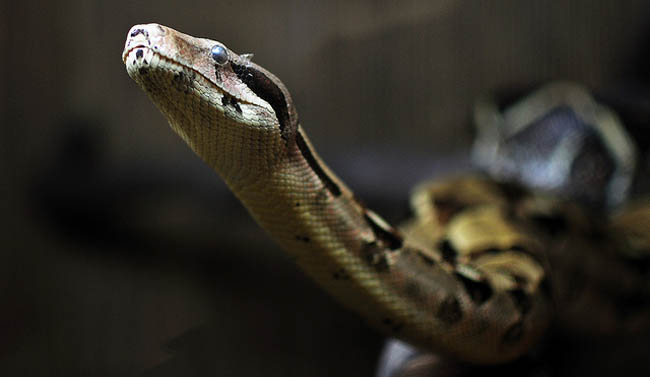
Snakes. Not only can they be a huge nuisance, but they can also be very dangerous. Certain snakes live in certain parts of the world. Some are docile and will not cause you any harm if they were to bite you. But there are others whose venom is so strong that they can kill you with one bite.
It’s very important to educate yourself on which snakes are poisonous, especially if you live in a part of the world that contains venomous snakes. Knowing how to identify a poisonous snake can help you stay out of harm’s way or take the right precautions if you were to ever come across one.
So how do you know if a snake is venomous?
Know what’s poisonous.
In the United States, there are four types of venomous snakes that can be found: cottonmouths, copperheads, coral snakes and rattlesnakes. Cottonmouth snakes have a white stripe on their head, tend to live near water and are usually found alone. Copperheads range in color from orange, peach, pink and brown. Coral snakes have red, black and red stripes along their entire bodies. Rattlesnakes have a rattle at the end of their tail as well as triangular shaped heads.
If you live outside of the United States, it’s a good idea to find out which snakes are poisonous in your area so that you can get to know what they look like. The UK and India are known to have poisonous snakes, including the Adder, common cobra, common krait, saw-scaled viper and Russel’s viper. Australia has the most known poisonous snakes, with 65% of the snake species containing venom.
Look at the shape of their head.
In case you’re not familiar with poisonous snakes, one way to tell is by looking at the shape of their head. Poisonous snakes contain venom glands in their heads, making their head more of a triangular shape. Non-venomous snakes, since they lack the venom glands, will have more oval-shaped heads.
Look at their color.
Although it’s not a foolproof method, most venomous snakes are multiple colors while non-venomous snakes tend to be one solid color. However, some copperhead snakes can be one solid color, which is why this is not the best method to go on.
Watch how it swims.
Some venomous snakes live near the water, and watching how the snake swims will tell you if it’s venomous or not. Venomous snakes that swim with only their head above water are not poisonous, but those that tend to float with the majority of their bodies above water are poisonous.
Look for identifying marks.
Certain snakes have tell-tale marks on their bodies that will let you know what type of snake they are. Rattlesnakes will have a rattle at the end of their tail. Viper snakes have X- or V-shaped markings on their head. Cobras have a “hood”, which they spread out behind their head.
Listen.
Certain snakes will make identifiable sounds that will let you know that it’s poisonous. For example, the rattlesnake will use the rattle at the end of its tail to make a rattling sound, and the saw-scaled viper will make a sound that is similar to a saw.
Martha Franklin lives in Indiana and writes for Franklin Pest Solutions. Martha loves sharing factual information about common household pests and solutions to reduce their impact on our daily lives.
image source





